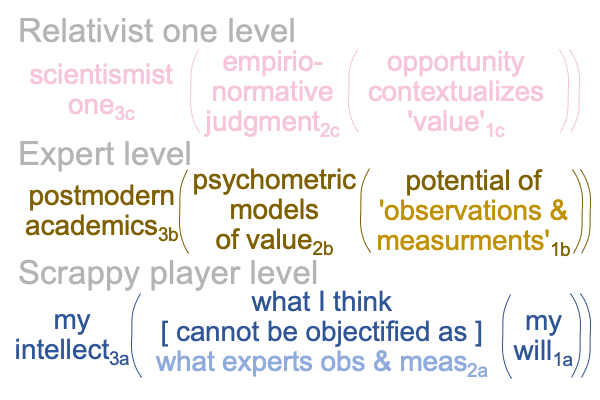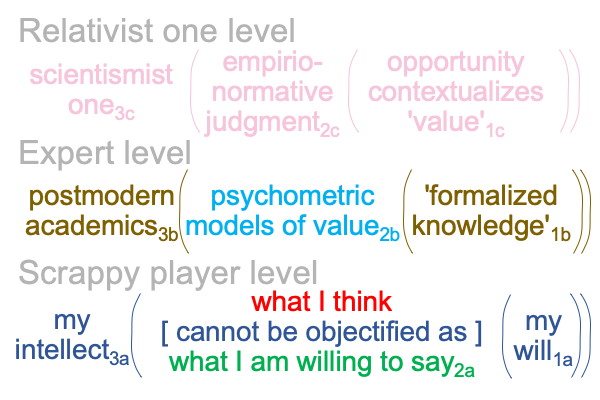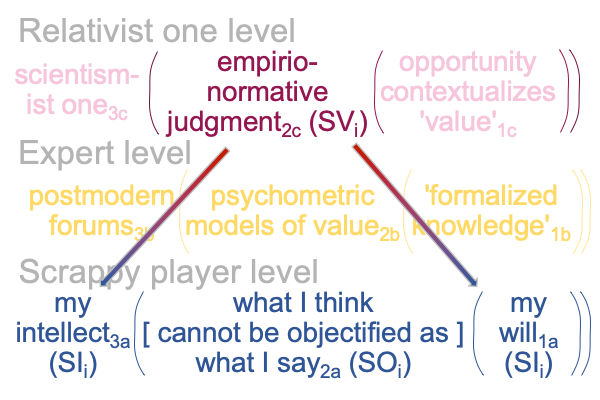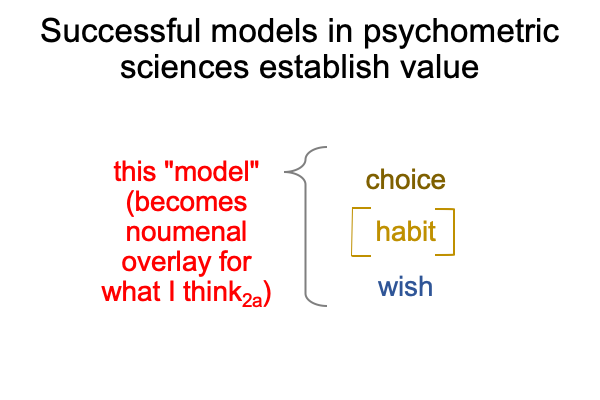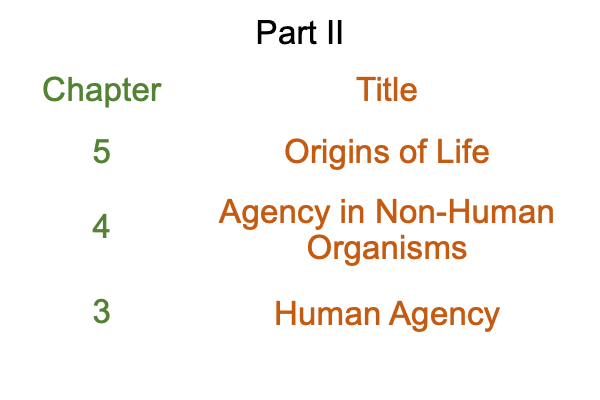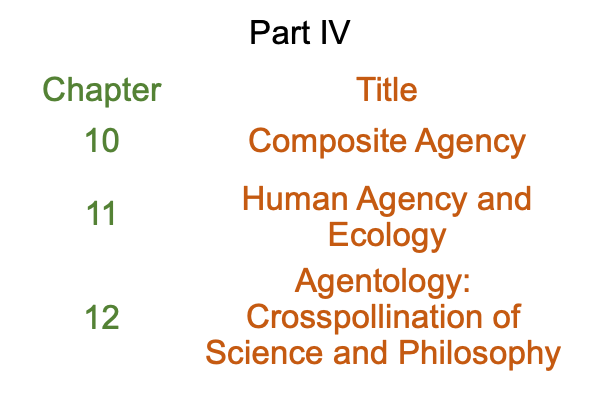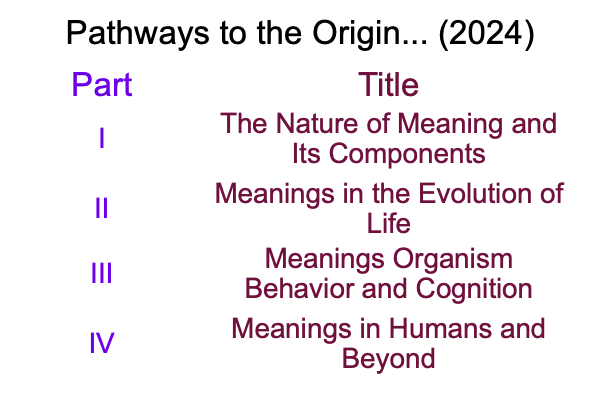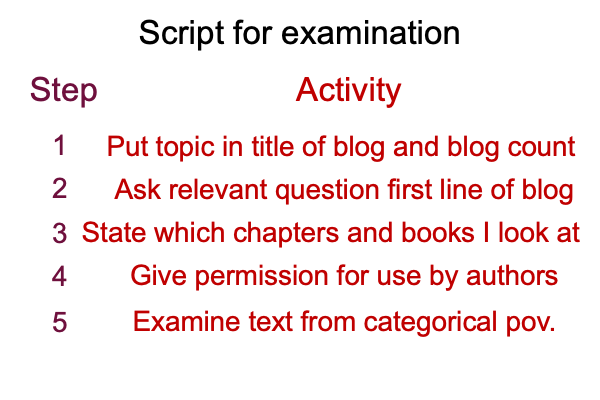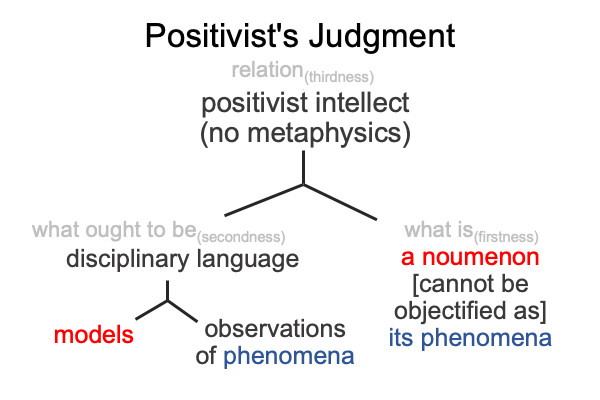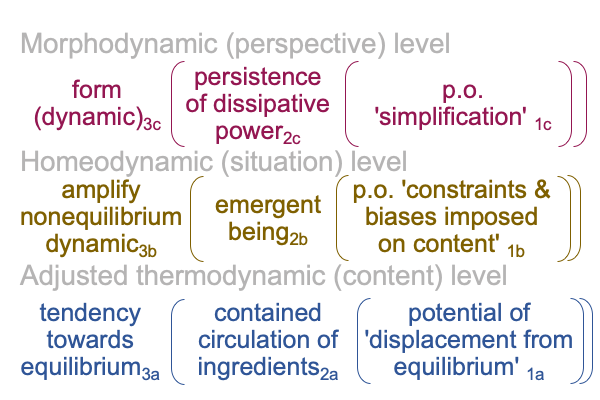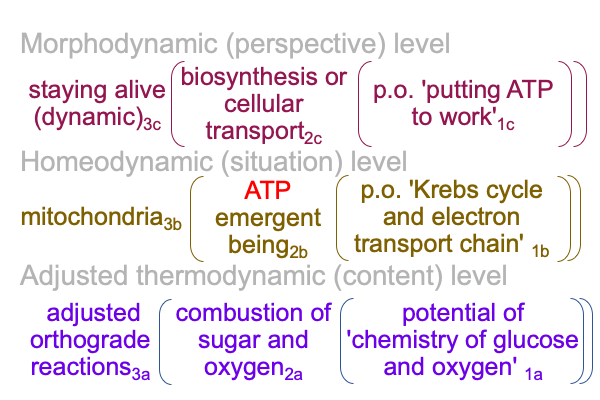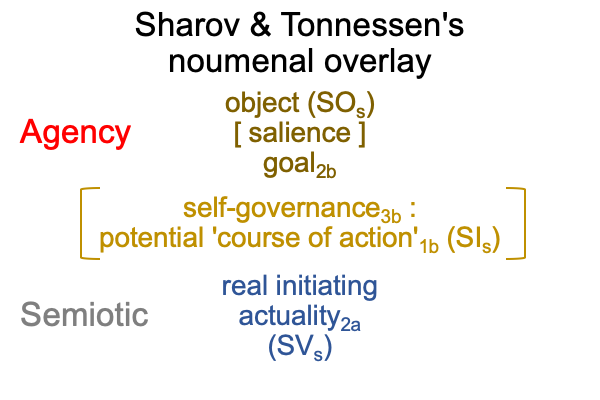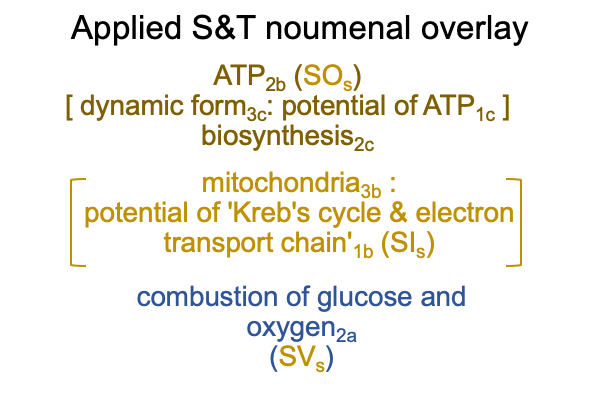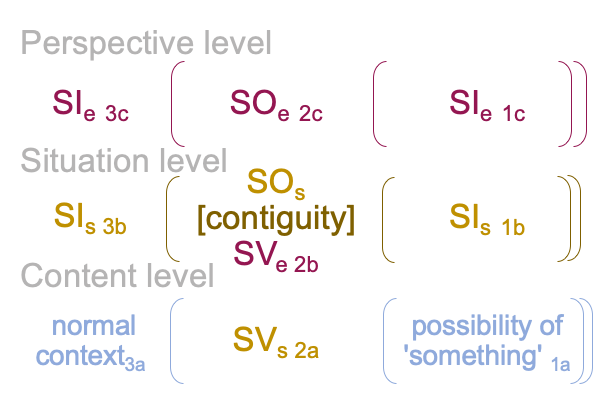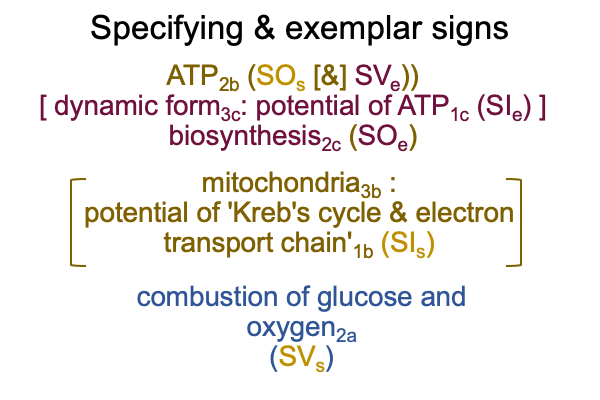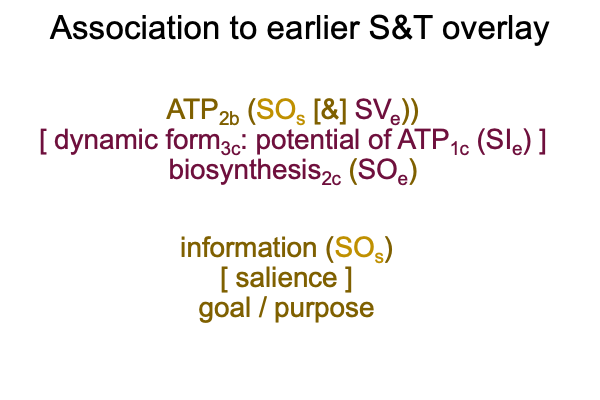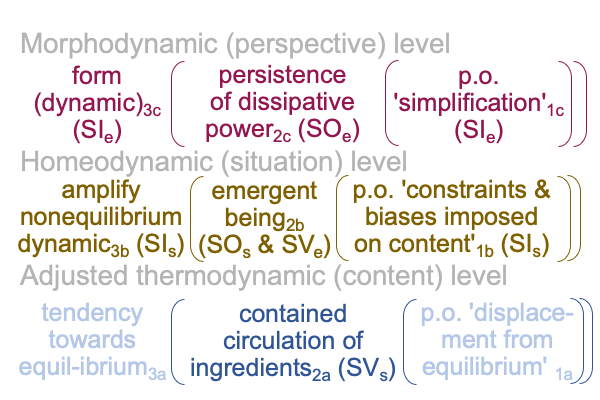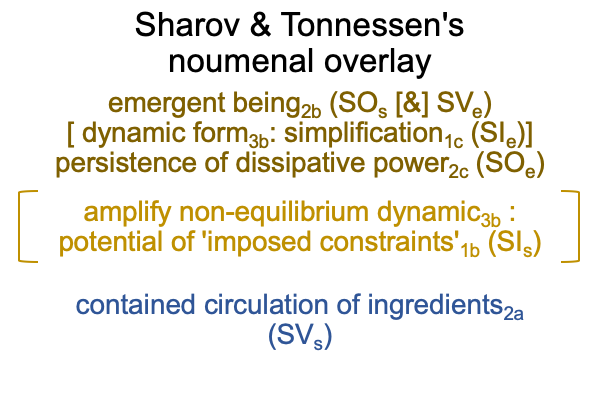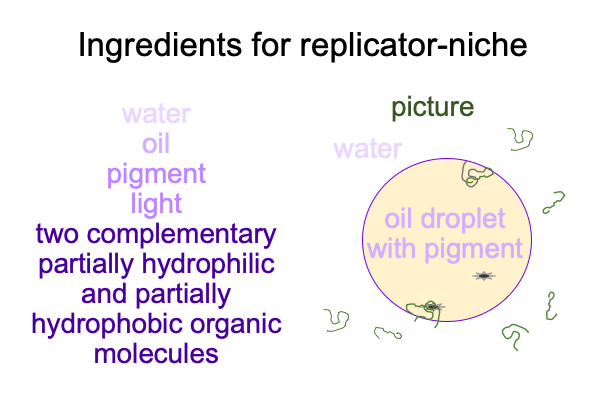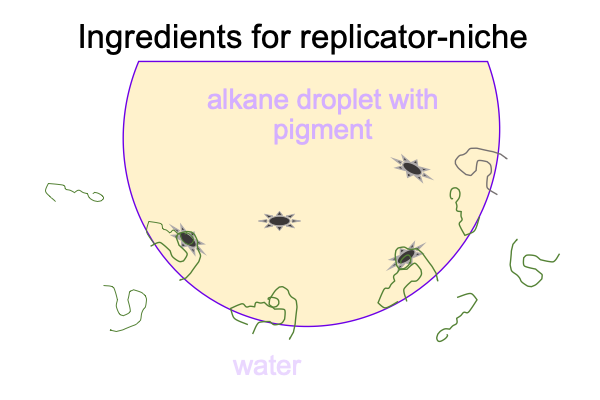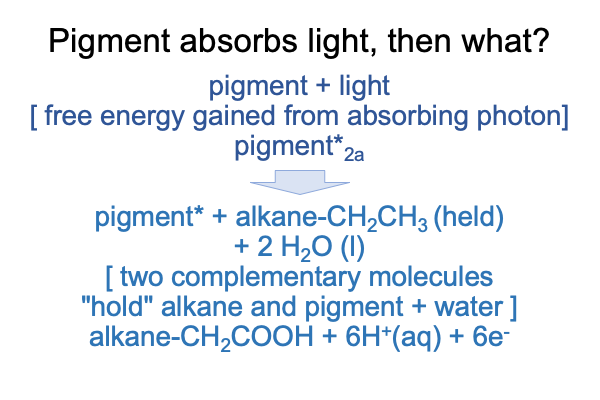Can Biosemiotics Explain The Psychometric Sciences? (Part 3 of 4)
0241 Science is about the search for truth.
This is the case for biosemiotics.
Science also is about empowering the human will.
This is the case for the psychometric sciences.
The human intellect3 contextualizes the potential of the human will1. Does this normal context3 and potential1 describe human reason? What actuality2 does human reason3,1 support? How about what I think [is manifested by] what I say2.
This nested form allows me to imagine that the above dyad may serve as a content-level actuality2.
0242 Here is a picture.
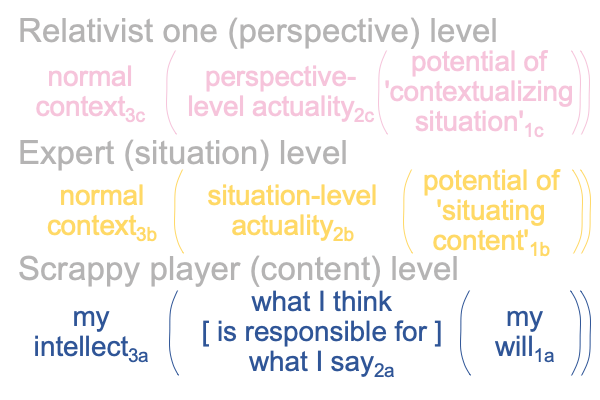
0243 The content-level nested form belongs to the scrappy player. The scrappy player will be situated by experts. The experts provide opportunities for the one who relativizes all the jurisdictions of the experts. I call the perspective level normal context, “the relativist one3c“.
0244 The full three-level interscope is developed in Looking at Steve Fuller’s Book (2020) “A Player’s Guide To the Post-Truth Condition”, appearing in Razie Mah’s blog for July 2024, as well as in Part I of the e-book, Original Sin and the Post-Truth Condition, by Razie Mah, available at smashwords and other e-book venues.
0245 Ah, does that mean that the psychometric sciences are implicated in the current post-truth condition?
You bet.
The next move is to construct an expert level that situates the scrappy player.
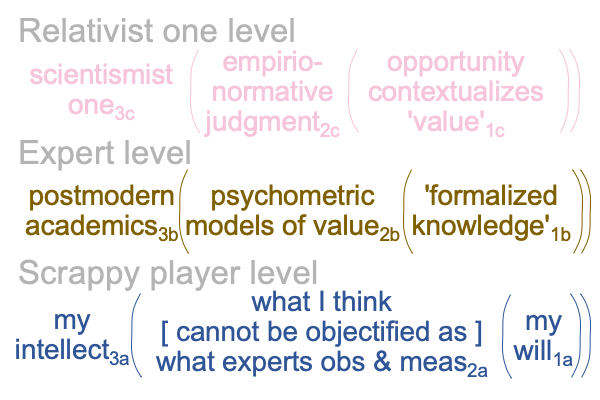
0246 Note how what I say2a has been modified to phenomena2a available to postmodern expert1b. Experts3bformalize1b phenomena2a in the process of constructing psychometric models of value2b. Various disciplinary languages3b (relation, thirdness) are used in turning the phenomena of what people say2a (what is, firstness) into observations and measurements1b suitable to modeling as value2b (what ought to be, secondness).
These disciplinary languages derive from capitalist and socialist ideologies, reformatted to sound like the natural and the social sciences.
Yes, capitalist and socialist theorists learn to speak in the style of the empirio-schematic judgment. These advocatessound like natural scientists and they define their academic turf as “scientific”. Perhaps, it is only make believe. But, the empirio-normative judgment2c takes it to be real1c.
Compare the expert level with the empirio-schematic judgment, unfolded into a situation-level nested form.
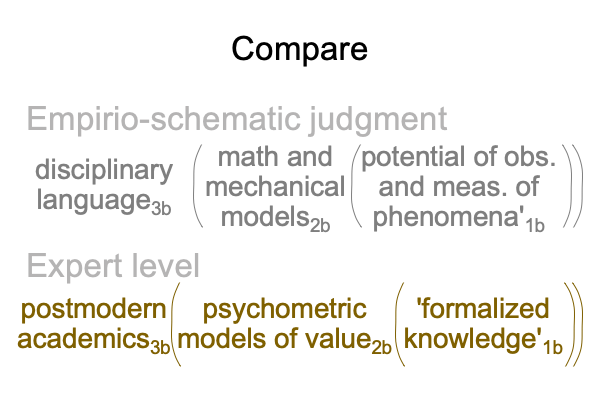
Indeed, the comparison is fecund. Both capitalist and socialist theorists speak the same style of scientific disciplinary discourse. No wonder that the proposed models2b never really make sense to the scrappy player3a. Capitalism3b and socialism3b come from different theoretical possibilities1b.
0247 What do capitalist and socialist ideologies3b have in common?
During the Third Battle among the Enlightenment Gods, the Cold War among Materialist Ideologies, capitalism and socialism fight over the same noumenon, the thing itself that can be modeled as value. Now, in the Fourth Battle with the Enlightenment Gods, Empirio-Normative Domination of Subject Populations, capitalist and socialist theorists unite in the production of value2b. They do so in the imitation of natural science. And, that is what they have in common.

